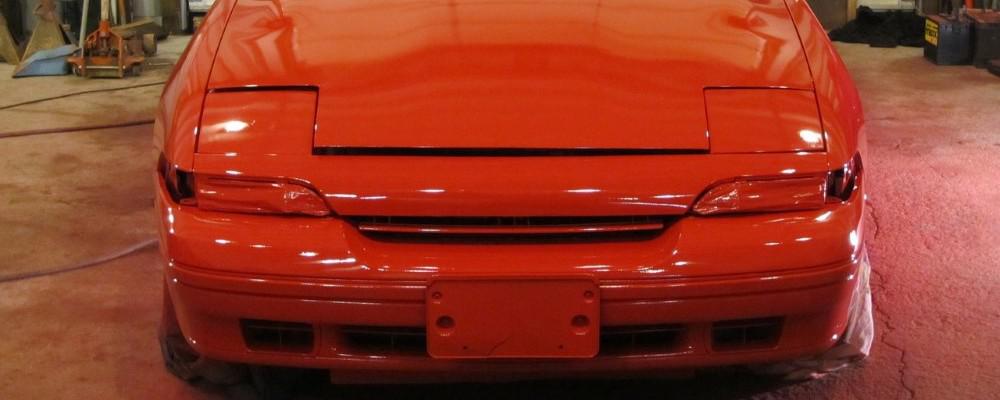
Colour matching - identify the correct colour
Most cars have a paint code number, either on the VIN plate, a sticker under the bonnet or boot, in a doorshut or even stencilled somewhere. Finding this will help identify the colour name. Some old codes have now been reused, so the year of manufacture is needed as well. Once the colour has been identified, a check with your paint supplier should reveal whether only one formulation exists for that code, or if there are multiple shades, called variants. These alternative colours may be a tiny shade different, or in some cases almost a totally different colour. It is not unusual to have ten or more `variants' for the same colour.
Car makers are supplied by many different paint companies, aftermarket refinish paints are produced by even more. Some are well known names, e.g. I.C.I or Dupont, others have names that are generally unknown and unpronounceable. All of these could supply a colour, say Ford Radiant Red, which would match an original Ford panel, but mixed using their own specific pigments and different formulas. This method of producing the same colour by different means can sometimes produce odd results, such as a red or orange panel that appears to match perfectly in daylight, but looks like black against white under artificial or street lighting.
Colour matching - same colour, different shades
After identifying the basic colour, a trip to your paint supplier with either the car or a piece of the original painted bodywork will be needed. They should have a full set of colour variant cards to help decide on the correct shade. More upmarket outlets may also have a spectrometer available, which in some cases can even be used to provide a paint formula from scratch. The required shade, once chosen, can then be mixed by the supplier who hopefully is skilled in the art of accurate paintmixing. Paint formulas are graduated down to 0.1 of a gramme, and whilst good paint suppliers realize the need for absolute accuracy, some staff do not always show the same enthusiasm.
Metallic colours present their own problems. As well as being available in the same never-ending range of colours and variations, application techniques also play a major part in colour matching.
Depending on the type of refinish paint used, metallics have the ability to:
Match perfectly when viewed face on, but look different/darker/lighter when viewed at an angle; become darker if applied heavily; become lighter if applied in light coats; vary the shade by varying air pressure, paint viscosity, type of thinners, ambient temperature, type and setup of spraygun - in other words there are many more ways to produce a bad match even with the correct paint.
Newer basecoats go some way to remedy these problems, but the variations possible make `blending' of metallic repairs a very attractive proposition to avoid colour matching difficulties in the first place. Blending the basecoat colour over a larger area than the actual repair will produce an invisible repair when done correctly.
-

